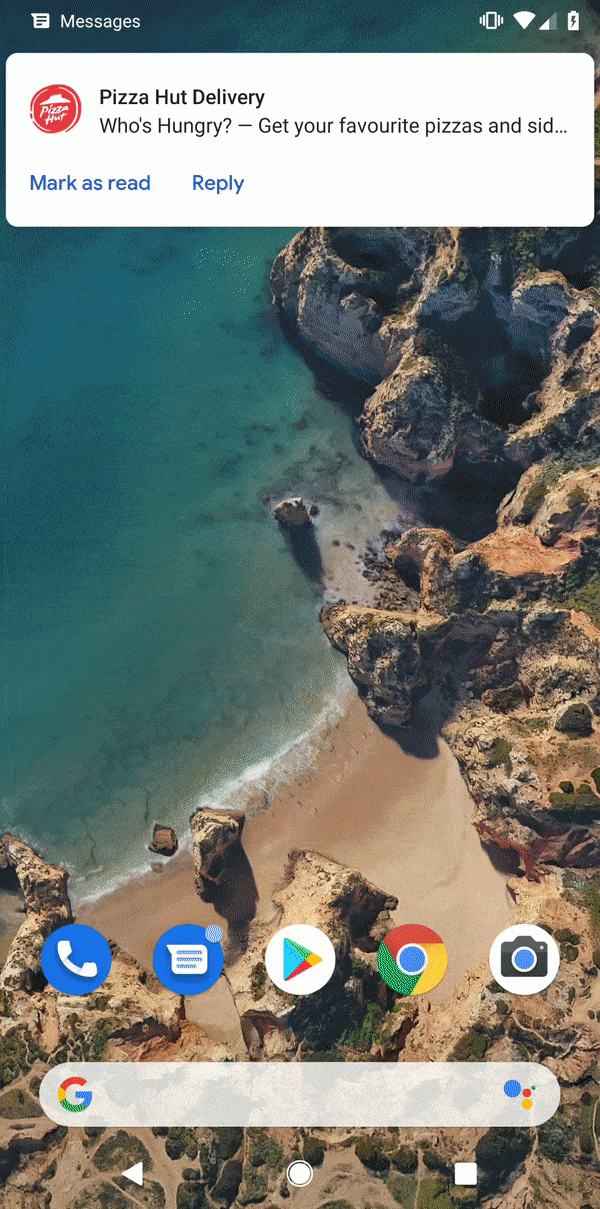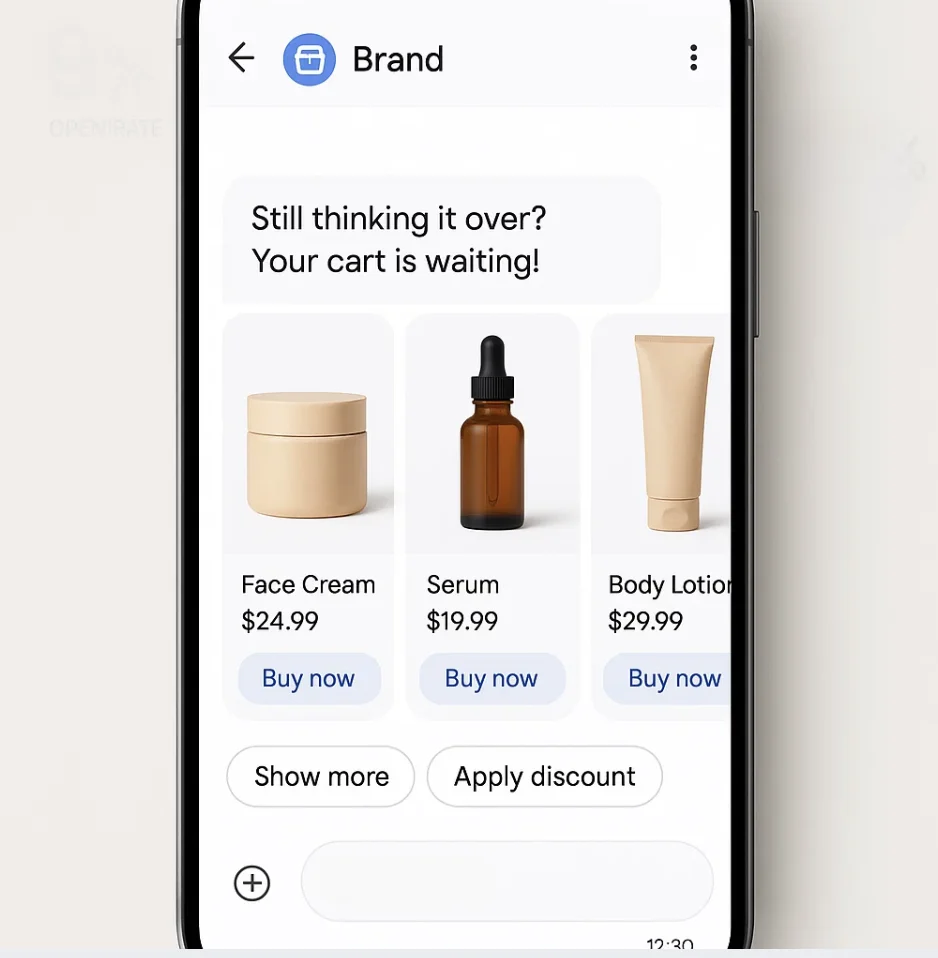For decades, SMS has been the undisputed king of mobile marketing. It’s reliable, direct, and has a reach that other channels can only dream of. A staggering 16 million SMS messages are sent every single minute worldwide. But as we move deeper into 2025, a new contender has not just entered the ring but is fundamentally changing the game for ecommerce brands: Rich Communication Services (RCS).
While SMS remains a crucial tool, the landscape is shifting. Customers now expect more than just plain text. They want interactive, visual, and engaging experiences delivered directly to their native messaging app. This is where RCS excels, blending the unparalleled reach of SMS with the rich, app-like features that drive modern commerce. For ecommerce businesses looking to cut through the noise, the question is no longer if they should adopt RCS, but how they can integrate it into a powerful, unified messaging strategy.
RCS vs. SMS: A Comparison
To understand the future, we must first appreciate the present. Both SMS and RCS have distinct roles to play in a brand’s communication arsenal.
SMS (Short Message Service): The Reliable Workhorse
Launched in the 1980s, SMS is the veteran of mobile messaging. It’s built into every mobile phone, requires only a cellular signal to work, and is universally understood. Its strength lies in its simplicity and reliability.
- Reach: Near-universal, reaching virtually every mobile user on the planet.
- Simplicity: Limited to 160 characters of plain text.
- Reliability: Doesn’t require an internet connection, making it perfect for urgent, critical alerts.
These roadblocks dilute brand identity and weaken audience trust.
RCS (Rich Communication Services): The Engaging Innovator
Think of RCS as the evolution of SMS—it’s what text messaging was always meant to be. It operates over an internet connection (Wi-Fi or mobile data) and transforms the standard inbox into a dynamic, interactive space. The most significant development has been Apple’s decision to support RCS with iOS 18, finally bridging the gap between Android and iPhone users for a unified rich messaging experience.
- Rich Media: Send high-resolution photos, videos, audio files, and GIFs.
- Interactive Elements: Incorporate carousels of products, suggested reply buttons, and clickable calls-to-action (CTAs).
- Branding & Trust: Features like a verified sender profile with your brand’s logo and name build immediate trust and recognition, assuring customers the message is from you.
- Enhanced Analytics: Gain deeper insights with delivery receipts, read receipts, and even data on when a user is typing a reply.

Here’s a quick breakdown of how they stack up:
| Feature | SMS | RCS |
| Device Compatibility | Universal (All mobile phones) | Android & iOS 18+ |
| Internet Connection | No | Yes (Wi-Fi or Mobile Data) |
| Character Limit | 160 characters | Virtually unlimited |
| Media Support | No | High-res images, videos, GIFs, carousels, files |
| Branding | No | Verified sender, brand logo, custom colors |
| Interactivity | No | Suggested replies, clickable buttons, calendar integration |
| Analytics | Delivery reports (limited) | Delivery, read, clicked, and typing indicators |
| Security | No encryption | Encryption in transit |
Powering the Future: Unprecedented Industry Support
The meteoric rise of RCS isn’t happening in a vacuum. It’s the result of a concerted push from the entire mobile ecosystem. For years, Google has championed RCS on Android devices. However, the true turning point was Apple’s long-awaited adoption in 2024. This move signaled the end of the “green bubble vs. blue bubble” divide and created a single, powerful standard for rich messaging across the two dominant mobile platforms.
While SMS is supported by default everywhere, major mobile carriers across the United States, Europe, and Asia have now fully embraced RCS, making it a viable and scalable channel for businesses to reach a massive global audience. Projections show that RCS traffic is expected to quadruple over the next five years, making now the perfect time to get ahead of the curve.
RCS in Action: Ecommerce Use Cases for 2025
RCS isn’t just about making messages prettier; it’s about creating seamless, revenue-driving experiences. Here’s how ecommerce brands can leverage it:
- Visually Stunning Abandoned Cart Reminders: Instead of a simple text link, imagine sending a customer a carousel of the exact items they left in their cart. They can see the high-resolution product images, scroll through them, and tap a “Complete Your Order” button right from their messaging app.
- Interactive Product Recommendations: Brands can now use rich cards to showcase new arrivals, bestsellers, or just plain old personalized recommendations from the catalog based on a customer’s browsing history.
- Next-Level Order Confirmations: Send an order confirmation that includes a product image, a summary, and a button to “Track Package” that opens a real-time map. You can even include buttons to “View Receipt” or “Visit Our Store.”
- Engaging Promotional Campaigns: Showcase flash sales, in-store promotions, or just plain old campaign content with an eye-catching GIF or a short video.
- Effortless Customer Feedback: Want to know how a customer’s recent purchase was? Send an RCS message with suggested replies like “I love it! ⭐⭐⭐⭐⭐” or “It wasn’t for me.” This low-effort interaction dramatically increases response rates.

Don’t Discount the King: Where SMS Still Rules
Yes, RCS is the future, but SMS remains the universal constant in mobile communication. In certain high-stakes or low-connectivity scenarios, SMS isn’t just relevant — it’s irreplaceable.
1. Two-Factor Authentication (2FA) That Just Works
Security protocols and most global systems still default to SMS for OTPs, because it’s instantly delivered, SIM-tied, and doesn’t depend on data or apps.
2. Reaching the Unreachable
Rural areas, developing regions, or users on legacy phones, SMS cuts through it all. No internet? No problem. RCS simply doesn’t have this level of reach… yet.
3. Backup for When All Else Fails
SMS is your fallback fail-safe. If your RCS message doesn’t go through due to unsupported devices or poor data connectivity, SMS ensures the message still gets delivered.
The Winning Formula: Combining RCS and SMS in a Unified Journey
The most successful ecommerce brands in 2025 understand that the debate isn’t “RCS vs. SMS.” The real power lies in using them together. This is where a strategic, multi-channel approach comes into play.
The best practice is to create a communication “journey” or “waterfall” that prioritizes the richest experience first, with an automatic fallback to ensure delivery. This is a core feature within Netcore’s platform, allowing marketers to build sophisticated flows with ease.
Here’s what a modern ecommerce journey could look like:
- Start with the Best: The journey begins by sending a new product announcement via a highly engaging RCS message, complete with a video and a “Shop Now” button.
- Check for Engagement: The system waits to see if the user reads the message. If they do but don’t click, you can send a follow-up RCS in 24 hours with a special discount.
- Automated Fallback: If the user’s device doesn’t support RCS or they’re offline, the system automatically sends the message as a standard SMS with a clear link to the product page. This ensures no customer is left behind.
- Leverage Other Channels: If there’s still no engagement, the journey can trigger a follow-up message on WhatsApp or send a detailed email, creating a true omnichannel experience.
Your Next Move in Mobile Engagement
In 2025, SMS remains the reliable foundation of mobile communication, but RCS is the engine for growth, engagement, and conversion. By combining the universal reach of SMS with the rich, interactive capabilities of RCS, ecommerce brands can build customer relationships that are more meaningful, personal, and profitable. The future of mobile marketing isn’t about choosing one channel over the other; it’s about orchestrating them in harmony.
Ready to transform your customer communication and see what a combined RCS and SMS strategy can do for your ecommerce brand? Book a demo with Netcore today and let us show you the future of mobile engagement.
Why the Brand Kit Stands Out from Other Branding Solutions
Unlike generic template tools, the Brand Kit isn’t just about design—it’s about brand integrity at scale. Here’s what sets it apart:
- Built-In Brand Compliance – No more guideline policing; every asset is pre-aligned.
- Speed Without Sacrificing Accuracy – Get 5X faster creative turnaround times without compromising brand standards.
- Future-Proof Branding – As your brand evolves, updates sync automatically across templates and campaigns.
The Takeaway: Branding, Simplified
Branding shouldn’t be a bottleneck. The Brand Kit turns the chaos of scattered assets and manual revisions into a streamlined, automated process. Faster campaigns, stronger brand consistency, and zero headaches—it’s branding done right, every time.
Ready to put your branding on autopilot? Try The Brand Kit today.
 Holiday Sales Are Won Now — Grab the 2025 Holiday Marketing Guide to Unlock More Revenue.
Holiday Sales Are Won Now — Grab the 2025 Holiday Marketing Guide to Unlock More Revenue. 









